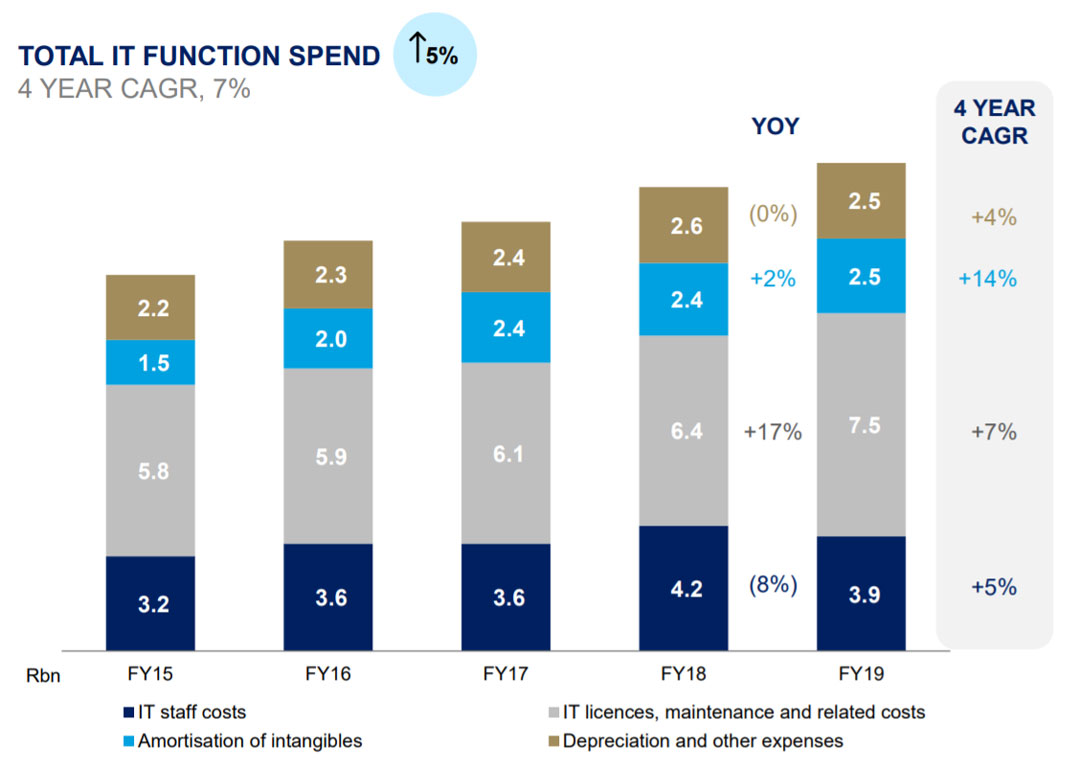 Standard Bank Group spent R7.5-billion on IT licences, maintenance and related costs in the 2019 financial year, up 17% from a year earlier, due to the weaker rand and costs associated with the group’s move from owned IT infrastructure to the cloud.
Standard Bank Group spent R7.5-billion on IT licences, maintenance and related costs in the 2019 financial year, up 17% from a year earlier, due to the weaker rand and costs associated with the group’s move from owned IT infrastructure to the cloud.
In slides accompanying the full-year results, the bank revealed that the rise in spending came in spite of a reduction in staff costs driven by lower headcount and incentive costs following a review of the IT skills base in 2018.
IT staff costs were R3.9-billion, down 8% from R4.2-billion in the previous year.
Amortisation costs rose by 2% driven by large strategic projects, including the implementation of SAP in South Africa and Finacle/Infosys in its other markets in Africa.
IT cost growth was caused by dollar-denominated licensing and maintenance fees; lower capitalisation as large projects moved to production (including core banking); additional turnkey resources due to difficulty in sourcing skills to deliver key digital initiatives; and the move from owned to outsourced and cloud computing services.
Four-year compound annual growth rate of all IT spend, including staff costs, IT licences and maintenance, amortisation, and depreciation and other expenses, was 7% to end-2019, Standard Bank said.
Cloud shift
On Tuesday, the bank’s CIO for personal and business banking in South Africa, Sabelo Nkwanyana, said it would soon begin moving its operational SAP banking systems onto the Microsoft Azure cloud platform as it looked to create what it called an “always-on bank”.
Nkwanyana said the bank would move its core SAP services to Microsoft Azure to improve customer experience and allow it to introduce new solutions to market more efficiently.

The bank told TechCentral that its strategy of using both Microsoft’s Azure data centres and Amazon Web Services infrastructure remained unchanged.
Standard Bank was one of the first banks in the world to move its core banking systems onto SAP. “It’s been a long and difficult journey. It’s been quite tough,” Nkwanyana said at a Microsoft and SAP press briefing.
“During the migration, it will still be expensive, with some on-prem and some in the cloud. But from an agility perspective, the move will put us in a good position, with the ability to scale up and scale down when we need to.” — (c) 2020 NewsCentral Media




